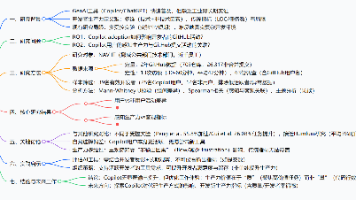angular利用module federation实现微前端 - 拦截器问题
当在 main 项目中调用 mfe1 项目的 http 请求时,没有走 main 项目的拦截器,而还是走的 mfe1 自己的拦截器。
·
当在 main 项目中调用 mfe1 项目的 http 请求时,没有走 main 项目的拦截器,而还是走的 mfe1 自己的拦截器
1. 创建环境
-
分别在两个项目中创建一个拦截器,并使用
ng g interceptor interceptor/req-res --project main ng g interceptor interceptor/req-res --project mfe1 /* * 两个项目的 interceptor,并打上log */ intercept( request: HttpRequest<unknown>, next: HttpHandler ): Observable<HttpEvent<unknown>> { console.log('main request'); return next.handle(request).pipe( map((event) => { if (!(event instanceof HttpResponse)) return event; console.log('main response'); return event; }) ); } /* * 两个项目的 AppModule */ const httpInterceptorProviders = [ { provide: HTTP_INTERCEPTORS, useClass: ReqResInterceptor, multi: true }, ] providers: [ httpInterceptorProviders ],
2. 试验问题
- 在两个项目中分别调用 http 请求,这个服务端用 express 简易搭一个就行,然后在 main 项目中用 proxy.conf.json 进行代理,从下图可以看出,在 main 项目中调用 mfe1 中的请求,并没有经过 main 项目的拦截器,而是经过自己的拦截器

-
当我们把 mfe1 自己的拦截器给注释掉,我们可以从下图中看出,mfe1 的请求就会走 main 的拦截器
providers: [ // httpInterceptorProviders ],

以此,我们得出结论,子项目有拦截器就走子项目,没有就走主项目,一层一层往外找
3. 解决问题
{
path: 'mfe1',
loadChildren: () =>
loadRemoteModule({
type: 'module',
remoteEntry: 'http://localhost:9001/remoteEntry.js',
exposedModule: './AppModule',
}).then((m) => {
const appModuleProviders = m.AppModule.ɵinj.providers
appModuleProviders.unshift(httpInterceptorProviders)
return this.loadRemoteRootModule(m);
}),
},
4. 验证答案
从下图中可以看到,我们的代码已经生效,先走 main 的拦截器,再走 mfe1 的拦截器

更多推荐
 已为社区贡献2条内容
已为社区贡献2条内容









所有评论(0)